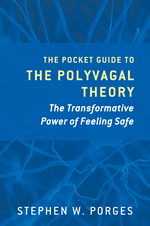THE LAST MONTH
Marcel Duclos wrote his latest book in honor of his dear friend and colleague Connie Robillard. It is a collection of thirty poems, one written every day as she navigated her way through the last month with ocular melanoma as a companion.
Origins
Somatic Movement Educator who has read many books by authors in the field, I felt a quickening and rising in my body and became curious, shyly excited, and a little nervous when invited to review a book by Joan Davis. Davis is among a generation of creative professionals in Ireland and across the UK dedicated their lives to in-depth explorations and research through the silent level (non-words) processes and expressions of the human body. In this very small, yet internationally growing world of somatic movement, Davis is among the “rock stars”, and she has rightfully earned her honor and fame through decades of creative, intellectual, emotional, and spiritual research that she integrated into a training programme called Origins.
Mindfulness
Mindfulness is trending. It’s been on the forefront of conversations in terms of Western therapeutic methodologies since Jon Kabat Zinn integrated it into his Mindfulness-Based Stress Reduction program (MBSR) in the early 1980s. Today, mindfulness practices are at the heart of many psychotherapeutic approaches such as: mindfulness-based cognitive therapy (MBCT); acceptance and commitment therapy (ACT); dialectical behavior therapy (DBT); mindfulness-based relapse prevention (MBRP); mindfulness-based trauma therapy (MBTT); and mindfulness-based eating awareness training (MB-EAT). The word itself, however, is often confused. Its meaning subjectively associated with who or what entity is promoting its use. There’s clearly a difference between Eastern approaches to meditation and mindfulness and the current Western emphasis. With the proliferation of modalities integrating components of meditation and mindfulness practice, this book is a welcome addition to Hogrefe’s Advances in Psychotherapy: Evidence Based Practice Series—noted as Volume 37.
A review of the Handbook of Body Psychotherapy & Somatic Psychology
There’s always this sense of anticipation when I read a book by editors and authors I personally know. My belly churns; there's an involuntarily pause before I exhale and my heart adds a beat to its rhythmic song because a resonance exists that translates from colleague to text. I hear their voice while reading as if we are together, in person, having an amicable chat.
When I heard that Halko Weiss, Courtenay Young and Michael Soth were part of The Handbook of Body Psychotherapy and Somatic Psychology, when I heard that many colleagues had contributed chapters, I immediately had to read it and share my thoughts with SPT Magazine’s readers.
Self Help Books: A Genre Unto Themselves
by Nancy Eichhorn
I’m a self-help junkie. I know, the word junkie might connote that I still need help, but the reality is I’ve read...
Treating Trauma-Related Dissociation
In their preface, Kathy Steele, Suzette Boon, and Onno van der Hart challenge the classic notion of ‘don’t just do something, stand there’ with a new notion: ‘don’t just do something, be there’.
Commentary on Babette Rothschild’s New Book and Chart
I am a big fan of Rothschild. Her earlier book (2000) elevated awareness of the autonomic nervous system (ANS), the substrate of all health, in the psychotherapy world, and taught us to look for and precisely recognize ANS signals in order to appropriately support recovery from trauma. Her new book adds excellent additional detail, including a “six-categories-of-ANS” poster that can now be viewed on the wall of our classroom at CSES. The bulk of the book is about therapy insights, which I found to be excellent; my concerns were just in a few pages of her Chapter Two.
The problem for me starts with Rothschild’s description of Polyvagal Theory (PVT), which occupies two pages in the chapter. She summarizes PVT as being the discovery of the “ventral vagus” function as distinct from the previously-known “dorsal vagus” function, which is the foundation of the parasympathetic branch of the autonomic nervous system. Both down-regulate the heart, but in different ways. She states that calm states arise from the ventral branch, and that collapse states arise from the dorsal branch. This is not all wrong, but for a person of Rothschild’s immense professional stature, I was really hoping for more.
You Are What You click: How Being Selective, Positive, and Creative Can Transform Your...
I started to write, “I’m the worst person to review a book on social media! I don’t use it.” Then, nearing the end of Dr Primack’s book, I realized, I use it more than I think.
I don’t Twitter, nor Instagram. I don’t TicToK or Messenger. I post articles on LinkedIn and use Facebook for the magazine. But a sense of who? me? reached out and grabbed me when Dr Primack discussed Facebook and canned birthday wishes: how people, like me, are reminded of “friends” birthdays so we can offer a greeting, an emoji. What truly tripped me was his discussion on our own take away.
First Aid for Stress and Trauma with TTT
We have all experienced stress; in some form it is a survival tool that gives us energy and fuel to handle a pressing situation. Sometimes a stressful situation is so overwhelming that we will do anything to avoid that situation for the rest of our life. In these cases, our security system will code everything in that situation into a script that will trigger a stress response as soon as anything reminds us of it. That stress response will grow stronger as our system generalizes it, to the point where we can generate a full life-or-death panic response by simply thinking about it. It is then called post-traumatic stress.














